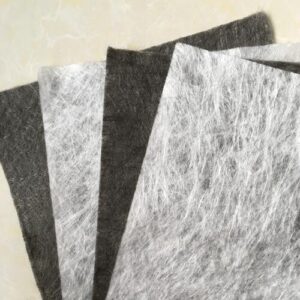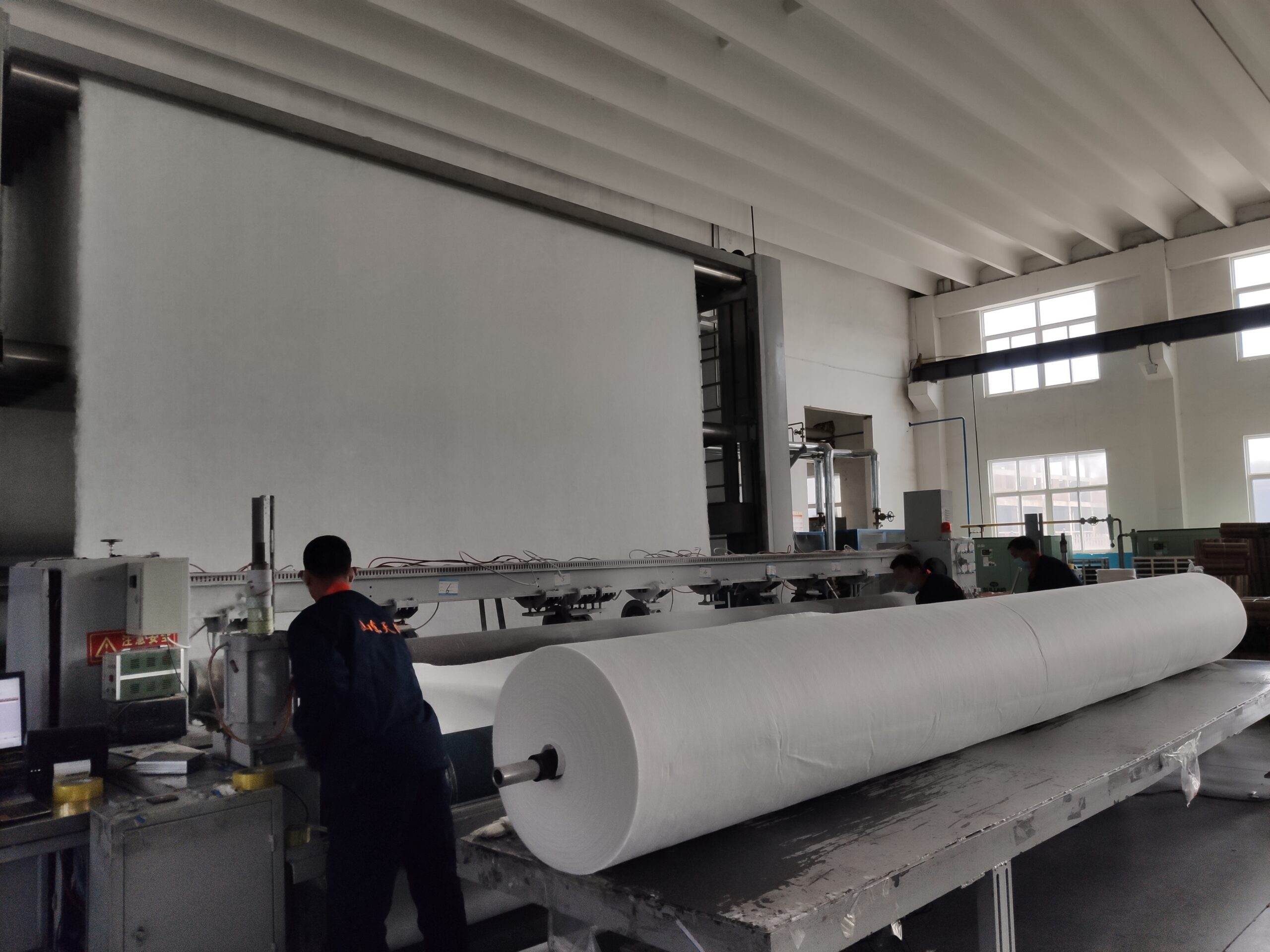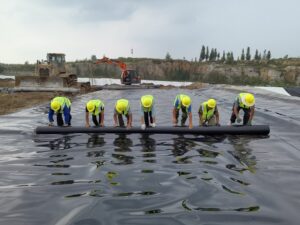What are the quality tests for geotextiles?
The quality inspection of geotextiles usually includes the evaluation of various physical properties, chemical properties, and installation quality. The following are common quality testing items for geotextiles:
Tensile strength test:
Tensile strength: Test the tensile strength of geotextile under stress.
Elongation: Test the degree of deformation of geotextile during stretching.
Tear strength test:
Tear strength: Test the resistance of geotextile to tearing force.
Puncture strength test:
Puncture strength: Test the puncture resistance of geotextile under puncture force.
Penetration performance test:
Permeability: Test the permeability of geotextiles to water.
Gas permeability: Test the permeability of geotextile to gas.
Chemical performance testing:
Chemical stability: Test the corrosion resistance of geotextiles in different chemical environments.
PH value test: tests the acid-base properties of geotextiles.
Size and flatness inspection:
Size inspection: Ensure that the width, length, and other dimensions of the geotextile meet the specifications.
Flatness detection: Check the flatness of the geotextile surface to ensure that there are no obvious waves, wrinkles, or deformations.
Thermal performance test:
Thermal aging test: tests the stability and aging resistance of geotextiles under high temperature conditions.
On site installation quality inspection:
Welding or stitching quality inspection: Inspect the welding points or stitching points of geotextile to ensure good quality and no water or air leakage.
These testing projects aim to evaluate the quality and performance of geotextiles to ensure that they meet specific project requirements. Quality testing usually follows relevant international standards, industry norms, or manufacturer’s recommendations.
Different tests may be required for different applications and environments to ensure the suitability and reliability of geotextiles.
Tensile strength testing of geotextiles
The tensile strength test of geotextiles is an important method for evaluating their performance under tensile loading. This test helps to determine the resistance of geotextiles to tensile forces in practical use, thereby ensuring their reliability in engineering and construction applications. The following are the general steps for testing the tensile strength of geotextiles:
Sample preparation: Cut out standardized samples from geotextile, usually with standard geometric shapes and dimensions. The preparation of samples requires attention to ensure their representativeness, usually requiring multiple samples for average calculation.
Test equipment: Use a dedicated tensile testing machine for testing. The fixture of the tensile testing machine should adapt to the size and shape of the geotextile to ensure that the sample is subjected to uniform tensile force.
Fixture installation: Clamp the specimen in the fixture of the tensile testing machine to ensure that the design of the fixture does not cause local concentrated stress on the specimen, but rather evenly applies it to the specimen.
Apply load: Start gradually applying tensile force to cause the geotextile sample to stretch. Record the applied force and the elongation of the specimen during the process.
Data recording and analysis: Record the data during the testing process, including tensile strength and elongation. The tensile strength is usually expressed in terms of force per unit area, with common units being N/m ² Or MPa.
Calculation results: Calculate the average values of tensile strength and elongation, and possibly plot stress-strain curves to gain a more detailed understanding of the behavior of geotextiles.
The standards for these tests typically involve specific test parameters, equipment specifications, and data recording methods, and are typically provided by relevant international standards, industry specifications, or manufacturers.
Correct testing helps to evaluate the mechanical properties of geotextiles, guide their use in practical applications, and ensure long-term stability in engineering projects.

Tear strength testing of geotextiles
The tear strength test of geotextiles is a key test to evaluate their performance under tearing action. This test helps to determine the tear resistance of geotextiles when facing tearing forces, which is crucial for their reliability in engineering and construction applications. The following are the general steps for testing the tear strength of geotextiles:
Sample preparation: Cut out standardized samples from geotextile, usually in a strip or specific geometric shape, to ensure representativeness of the test.
Test equipment: Use a dedicated tear testing machine for testing. The fixture of the tear testing machine should be able to clamp the specimen and ensure that the specimen is subjected to uniform force when applying tearing force.
Sample clamping: Clamp the geotextile sample in the fixture of the tear testing machine to ensure that the design of the fixture does not cause local concentrated stress on the sample, but rather evenly applies it to the sample.
Apply load: Gradually apply tearing force until the specimen tears. Record the applied force and tear extension of the specimen during the testing process.
Data recording and analysis: Record the data during the testing process, including the maximum tearing force and elongation of the specimen. Tear strength is usually expressed as a force per unit length, with common units being N/m or kN/m.
Calculation results: Calculate the average values of tear strength and elongation, and may plot curves of tear force and elongation to gain a more detailed understanding of the behavior of geotextiles.
The standards for these tests typically involve specific test parameters, equipment specifications, and data recording methods, and are typically provided by relevant international standards, industry specifications, or manufacturers. Correct testing helps to evaluate the performance of geotextiles under tearing force, guide their use in practical applications, and ensure long-term stability in engineering projects.
Author

Founded in 2002, Tinhy's team focuses on the manufacturing, marketing, installation, application and research and development of geosynthetic materials.
View all posts





